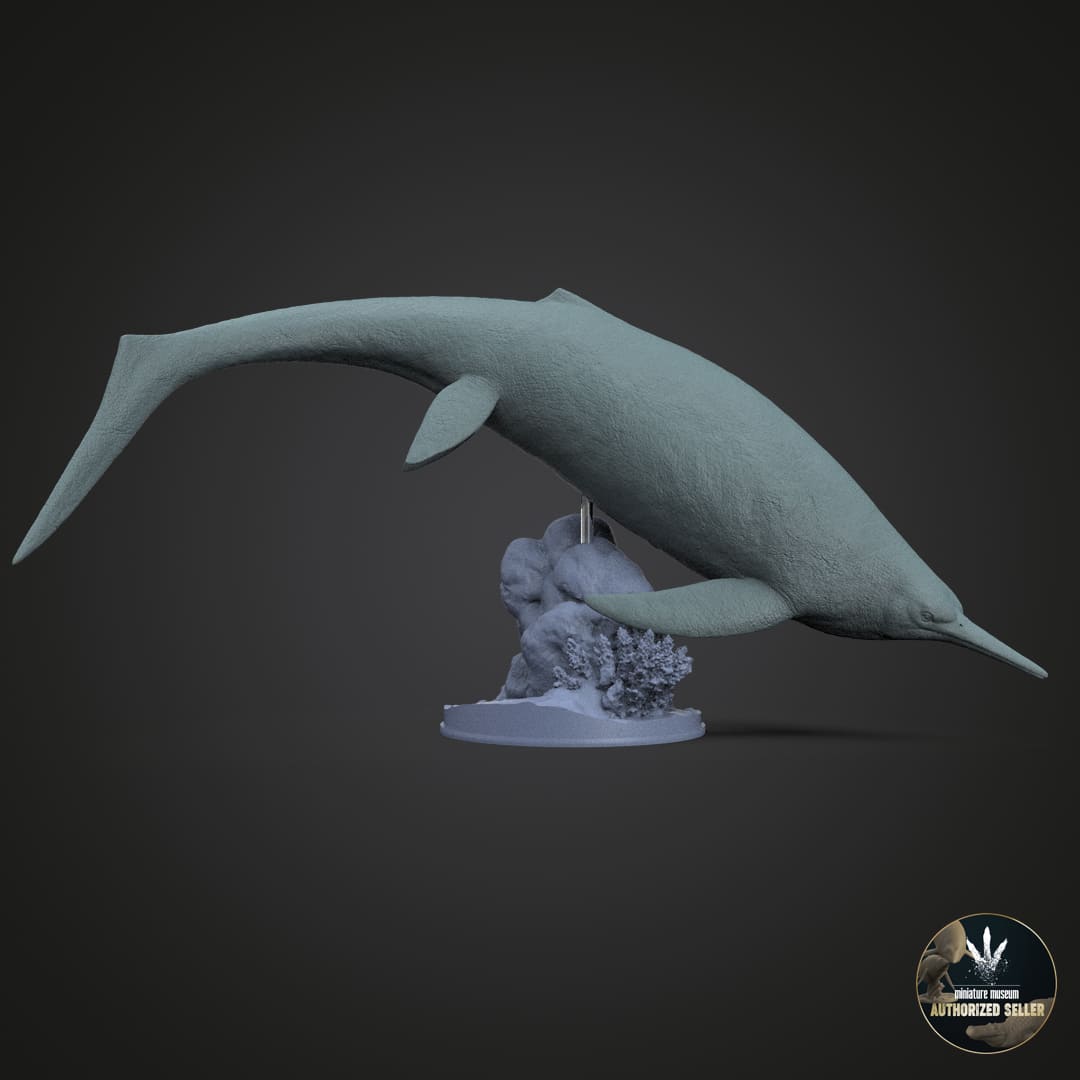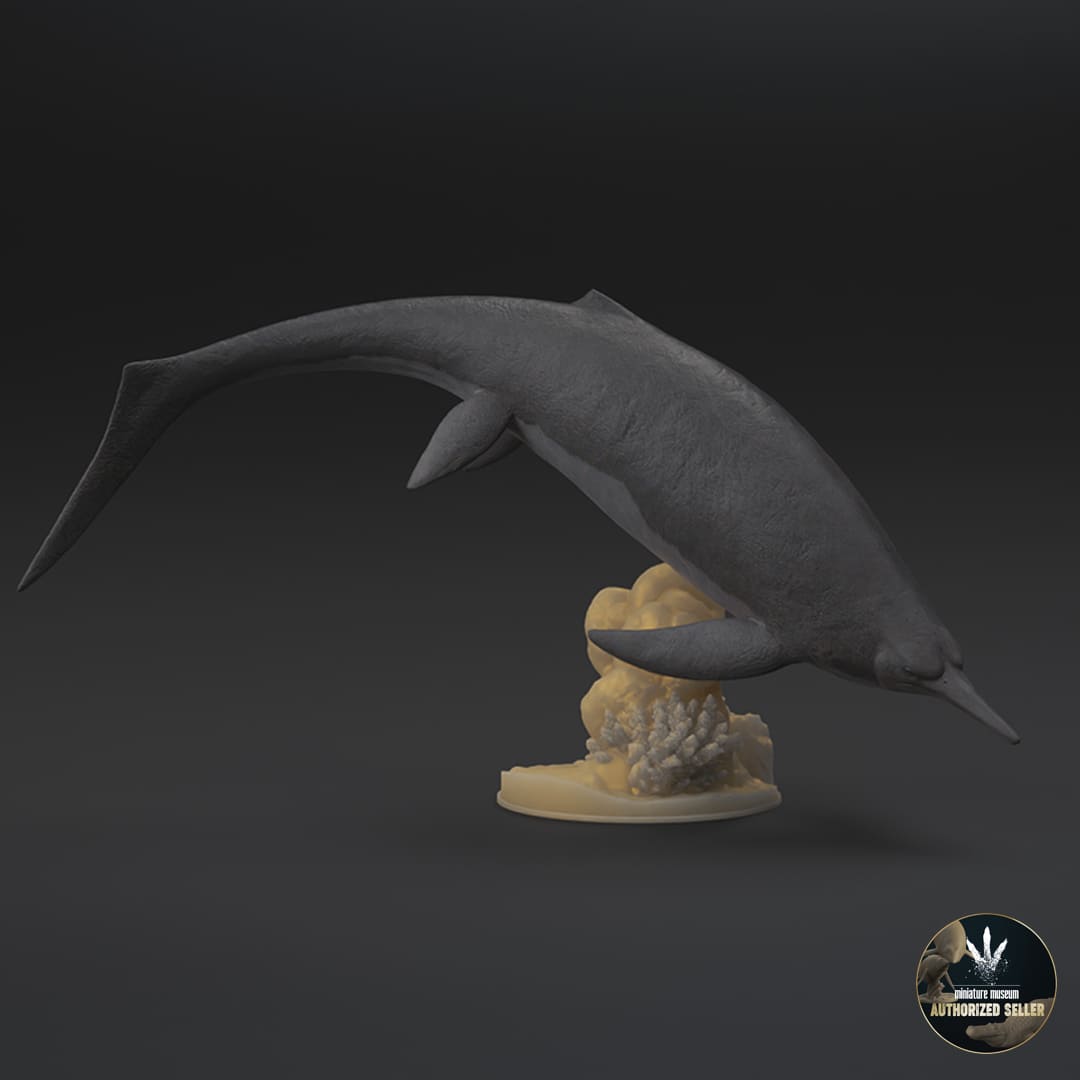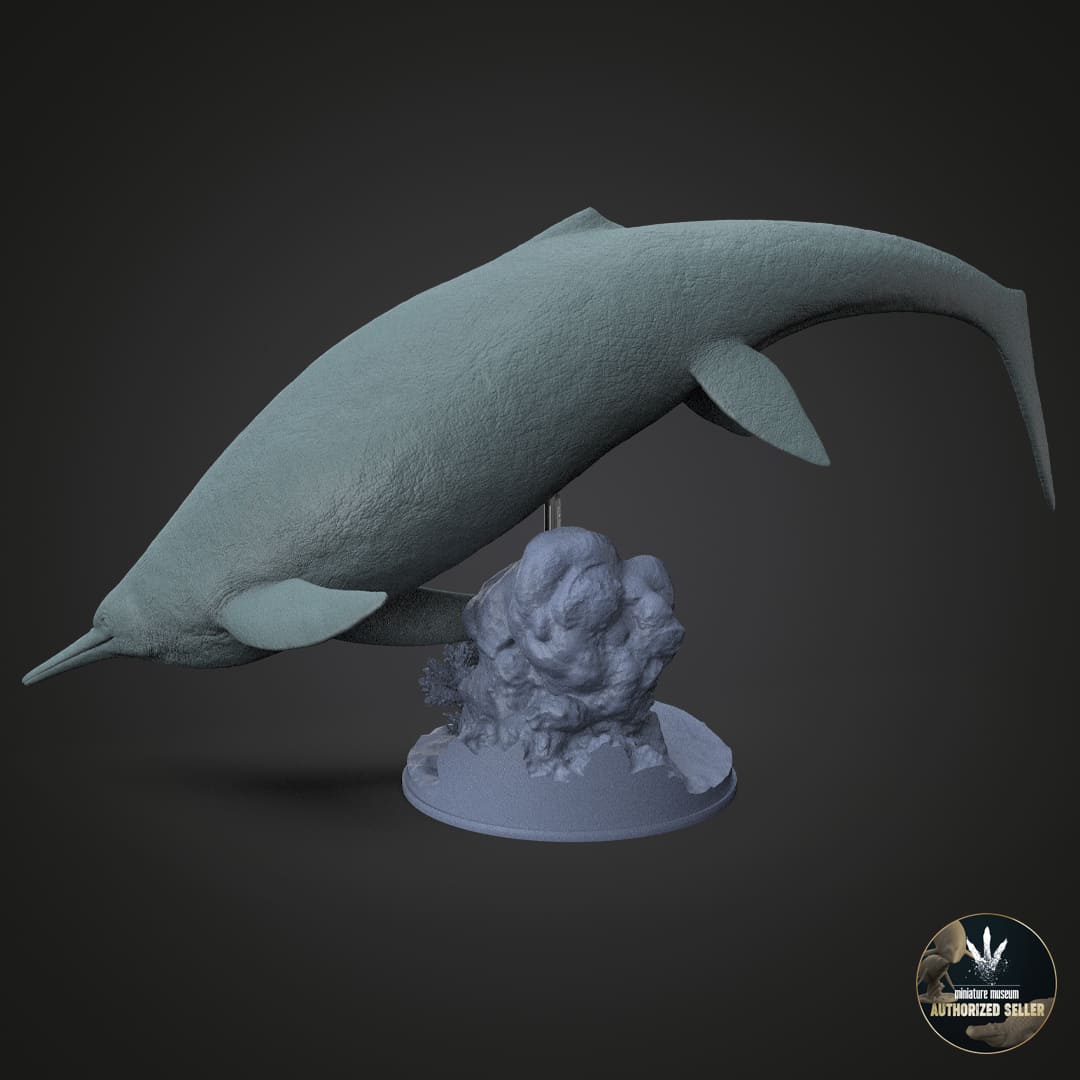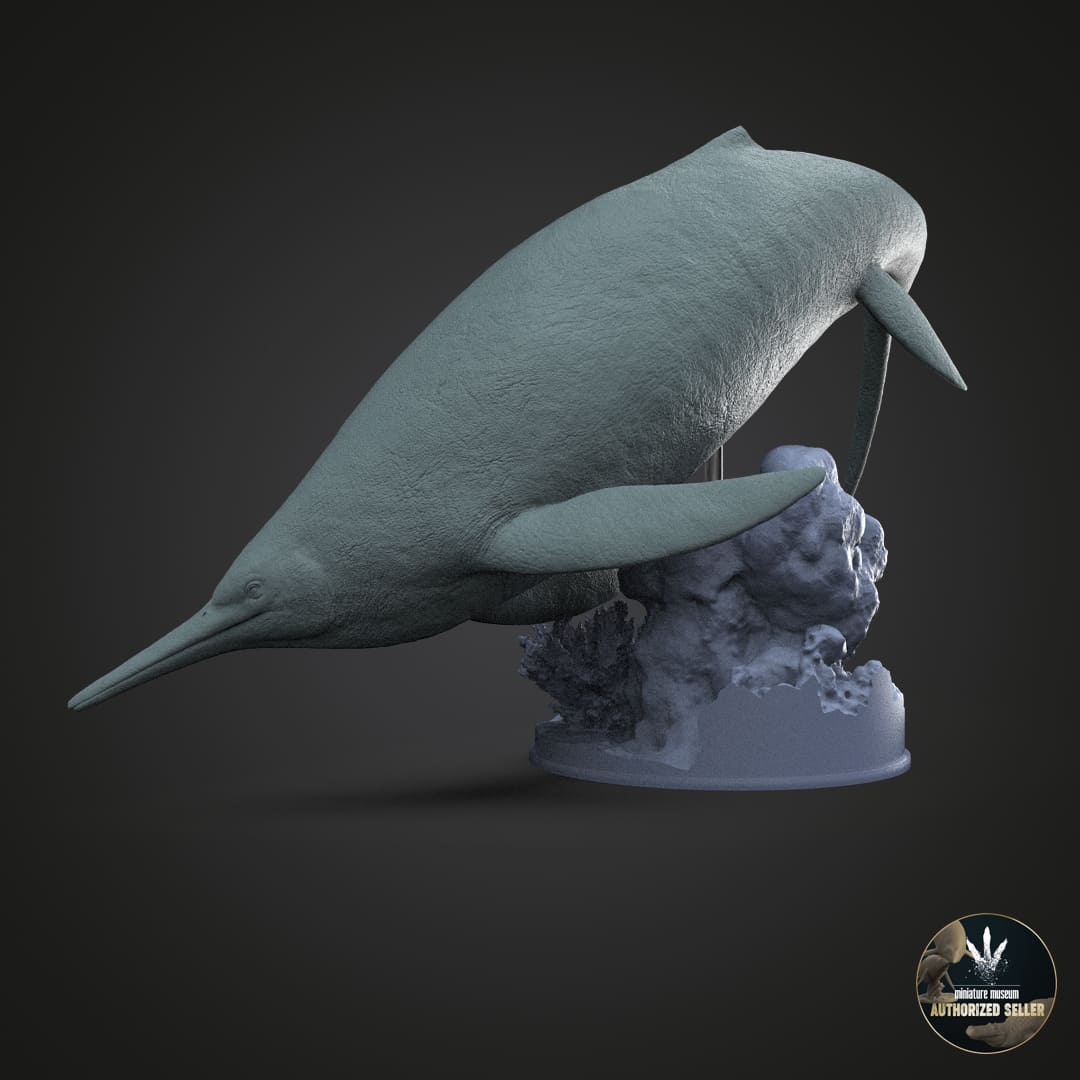




Besanosaurus leptorhynchus
Do you want another scale?
Contact us and we will make it possible!
How will you receive your replica?
In the unprimed and primed variants, you will receive the complete replicas except for the large models, where you will receive an assembly kit.
In the hand-painted variant, the replicas will be delivered complete.
How does the painting service work?
We created a private chat for you where you will have direct communication with our painter , being able to choose your preferred color schemes and follow the hand painting process closely.
Pairs well with

Besanosaurus leptorhynchus
If you have any questions, you are always welcome to contact us. We'll get back to you as soon as possible, within 24 hours on weekdays.
Shipping Information
Visit our shipping policy page to find all the information.
Customer Support
Give us a few details and we’ll offer the best solution. Connect by chat or email.
We are available 24/7.
FAQ’s
Visit our FAQ's page to find answers to common questions.
Contact Us
We'd love to hear from you. We are here to help. Visit our contact page to send us a message.
Product details
Besanosaurus leptorhynchus was a large-sized ichthyosaur, with estimates suggesting it could reach a length of up to 8 meters, making it one of the largest ichthyosaurs of its time. Its elongated, fusiform body was perfectly adapted for marine life. What sets it apart, however, is its long, narrow skull, which gave it a hydrodynamic appearance. Its snout, or rostrum, was noticeably elongated and thin, which is reflected in its name “leptorhynchus,” meaning “thin snout.” This trait indicates that Besanosaurus probably had a specialized way of life, hunting fast prey such as fish and cephalopods in shallow seas.
Its dentition was also peculiar. The teeth were small and sharp, perfect for catching slippery prey such as fish, and suggest that this ichthyosaur was not adapted for crushing or chewing, but for catching and swallowing its prey whole. Because of its size and shape, Besanosaurus is thought to have been an agile predator that hunted by ambush, using its speed and maneuverability to capture smaller aquatic animals.
Besanosaurus had a robust body, with pectoral fins and a tail that probably allowed it to move quickly and agilely through the water, using a swimming style similar to that of modern fish. However, unlike dolphins and other modern cetaceans, ichthyosaurs like Besanosaurus did not breathe underwater, so they had to come to the surface to obtain oxygen.
The environment in which Besanosaurus leptorhynchus lived was marine and tropical, since during the Triassic, warm seas covered large areas of what is now Europe. This ichthyosaur inhabited lagoons and shallow seas, coexisting with other forms of marine life, including other smaller ichthyosaurs, marine reptiles and a rich fauna of fish and cephalopods. The abundance of prey in these seas would have supported large predators like Besanosaurus.
The most recent studies on the fossils of Besanosaurus leptorhynchus have shed new light on its biology and evolution. Thanks to the excellent preservation of the fossils in the Besano Formation, it has been possible to study aspects of its internal anatomy and development. One of the most interesting findings is that some Besanosaurus fossils contain remains of embryos inside, indicating that, like other ichthyosaurs, this marine reptile was viviparous, that is, it gave birth to live young instead of laying eggs. This allowed it to spend its entire life in the water without the need to return to dry land.
Approximate measurements of Besanosaurus:
- 1:60 scale Complete
- Length 128 mm
- Height 54 mm
- Width 68 mm
- Snout-tail length 135 mm
- 1:35 scale Complete
- Length 220 mm
- Height 93 mm
- Width 116 mm
- Snout-tail length 230 mm
Information about aftershocks
Collector's item ; Hyper-realistic replica, highly detailed and with a high degree of scientific precision.
Made to scale, prototyped in resin and with a scenic base in most of the models offered. If you like miniatures, both for collecting and for painting, we offer you a wide variety of scale replicas; All of them related to dinosaurs, extinct prehistoric fauna and current fauna.
So if you love dinosaurs and animals as much as we do, this is your favorite store to collect and paint them :)
We are authorized distributors of all the replicas and figures we offer. We use 3D printers with 8K - 14K resolution, and high-quality resins with additives to improve hardness and flexibility, thus offering replicas of impeccable quality.
Different scales will be used to make the replicas (depending on the size of the species), although we are open to making other suggested scales upon request as long as they fit in our printing trays, for which you will have to contact us via email and request the required size.
Replicas are supplied with the option of airbrush priming in dark grey. If you require another colour, please let us know which one you prefer in the box with special instructions for the seller. Without priming, we do not guarantee that the resin will accept paint.
We also offer the option of choosing a professionally painted replica, which is agreed upon throughout its development with the painter, through a private chat available.
Complete replica (one piece): We supply complete replicas in those models that are small, and models that are medium, large or not very bulky, will have the prerogative of being presented as a complete replica or assembly kit as the case may be.
Complete replicas will be supplied separately from their base.
Replica assembly kit: We supply replicas whose models are large, very large or bulky, only with this option.
The indicated replicas (generally composed of base, head, body and tail) will come prepared for the subsequent assembly that will be required by the client, by sanding, putty, adhesive or technique chosen by the client.
All replicas are thoroughly inspected before shipping and will be carefully packaged to prevent damage during transport.
Information about the models
The poses of the models aim to represent each character in the most scientifically viable way, thus revealing the life and customs of prehistoric and modern fauna.
Each character has its own personality and develops in different life scenarios; birth, adolescence and play, hunting, feeding, fighting, courtship, death and many other scenes from their daily life, always from the creative perspective of their designers.
Handmade
All orders are individually prepared on the cutter for subsequent prototyping, obtaining a resin part that will require post-processing by manual and ultrasonic cleaning, support removal, ultraviolet curing, labeling and packaging.

We are authorized distributors
We offer both our own physical replicas and those that have been modeled by many of the best 3D designers, in order to offer you the greatest possible variety.
Frequently Asked Questions
If you have any questions about products, orders or shipping, please read our FAQ page to learn more.
